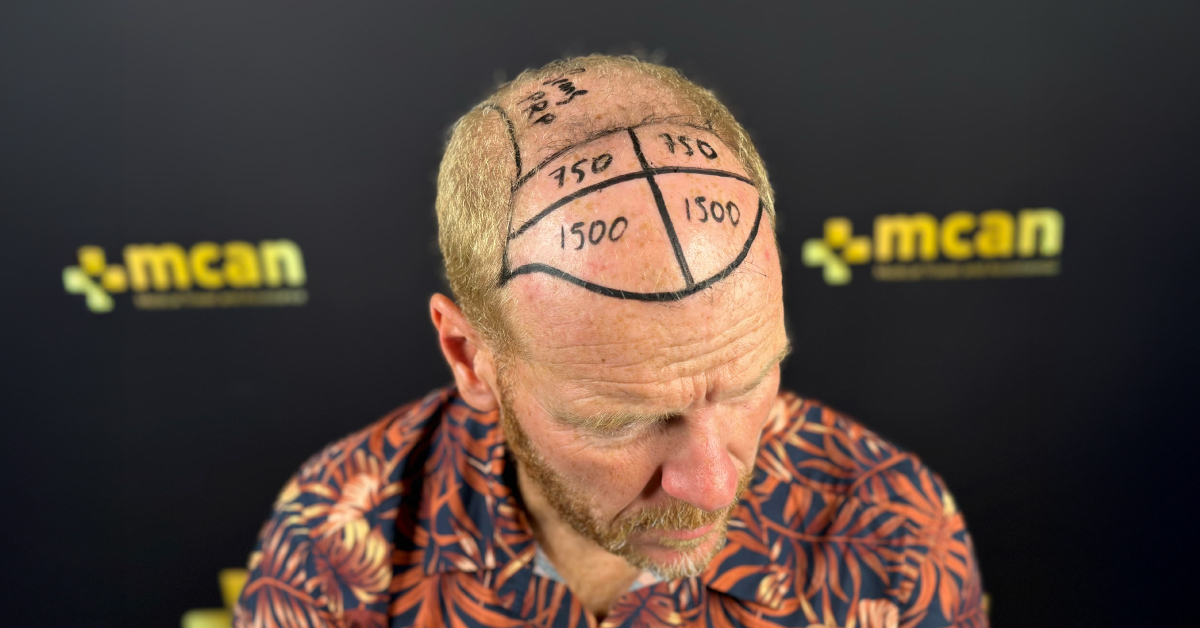
Hair loss can affect your confidence and appearance, but modern hair transplantation offers a reliable solution. One of the key factors that determine the success of a hair transplant is the number of grafts used. But what exactly is a graft, and how many do you need to achieve natural-looking results?
In this guide, we’ll break down what grafts are, how to calculate the number you need, and what results you can expect from different graft counts. Plus, we’ll explore the costs involved and why clinics like MCAN Health in Turkey have become a popular choice for high-quality, affordable hair transplants.
What Is a Graft in Hair Transplant?
In a hair transplant, a “graft” refers to a small piece of tissue containing one or more hair follicles. This tissue is harvested from the donor area—typically the back or sides of the scalp, where hair is more resistant to hair loss—and then implanted into areas affected by thinning or baldness. Each graft is carefully extracted and transplanted to ensure both follicle survival and natural-looking growth.
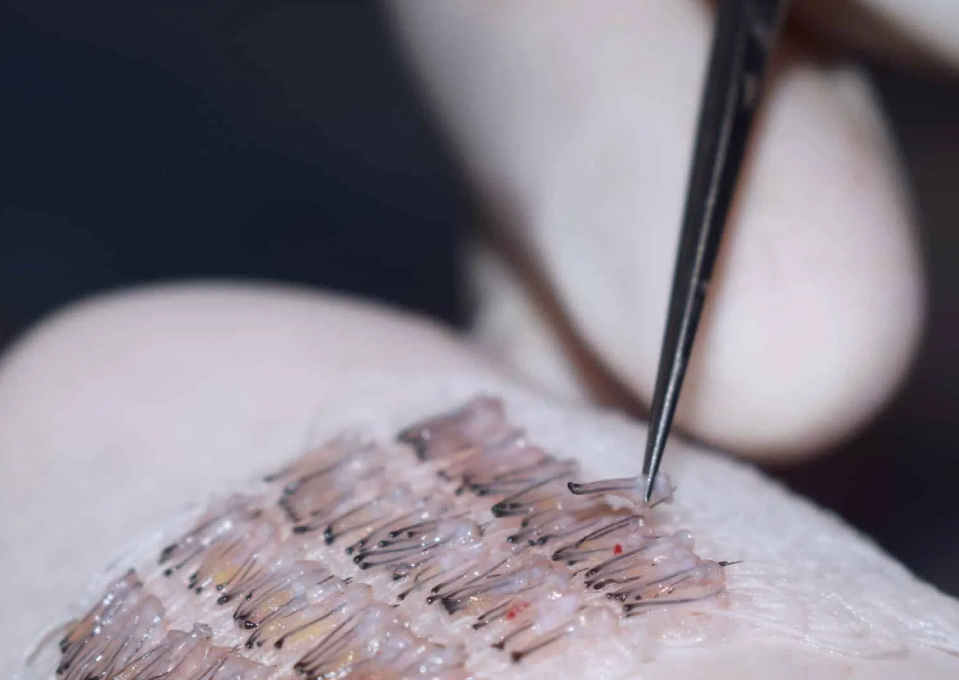
A graft can contain anywhere from 1 to 4 hairs, depending on the patient’s genetics and hair type. This number is crucial because it determines the density and overall aesthetic outcome of the transplant. For instance, single-hair grafts are often used to create a soft, natural-looking hairline, while grafts containing multiple hairs are placed further back to add volume and density. The strategic placement of different graft types ensures that the transplanted hair mimics the natural growth pattern, resulting in a seamless blend with existing hair.
The success of a hair transplant relies heavily on the expertise of the surgeon. Skilled hair transplant experts, like those at MCAN Health, meticulously select and place each graft to maximize follicle survival and aesthetic appeal. Factors such as graft angle, depth, and spacing are carefully considered to replicate the natural direction and density of hair growth. This attention to detail is what creates a natural, undetectable result that grows and behaves like your own hair.
1 Graft = How Many Hairs?
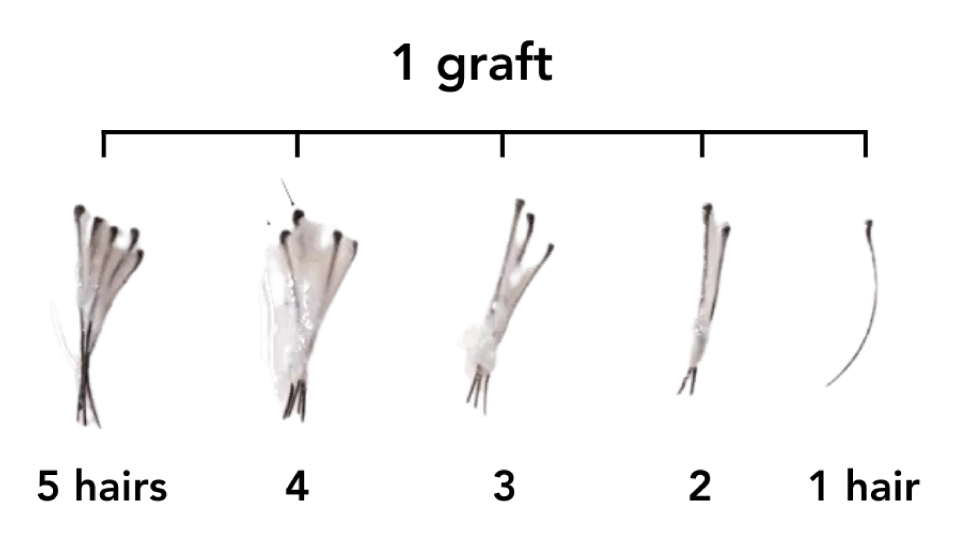
On average, one graft contains approximately 2.2 hairs, but the exact number can vary based on individual characteristics. Here’s a closer look at the different types of grafts and their uses:
- Single-hair grafts: Typically used along the hairline to create a soft, natural transition. These grafts help define the hairline without looking harsh or artificial.
- Double-hair grafts: Commonly placed in the frontal and mid-scalp areas to provide balanced density while maintaining a natural appearance.
- Triple and quadruple-hair grafts: Ideal for the crown and back of the scalp, where more coverage is needed to create the appearance of thicker hair. These grafts are also used to maximize density in areas with more significant hair loss.
How to Calculate the Number of Grafts Needed
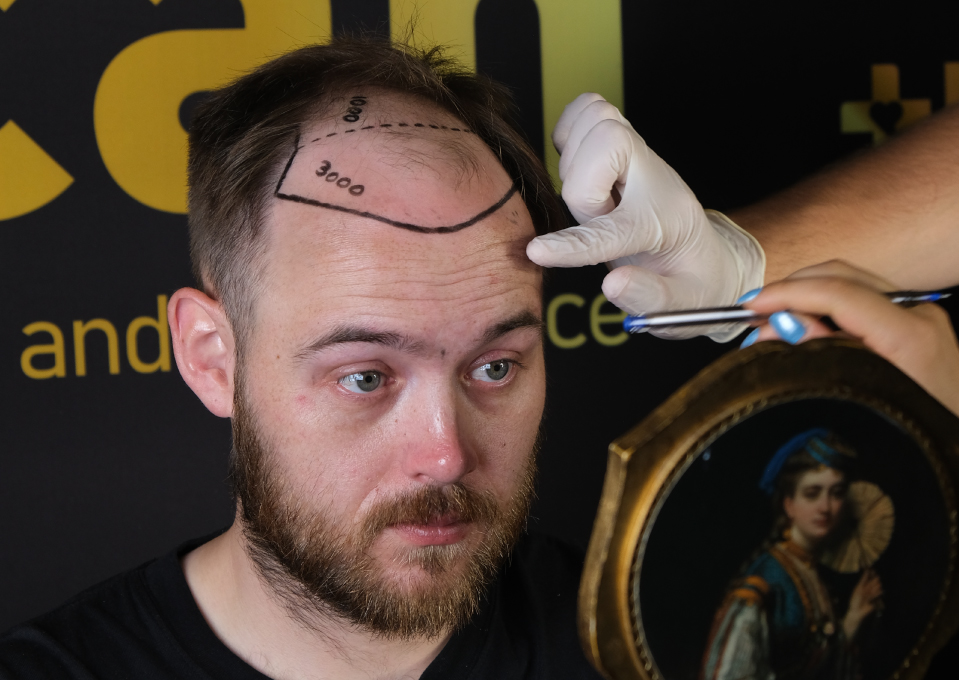
Determining the appropriate number of grafts for a hair transplant is essential for achieving natural-looking, long-lasting results. The exact number depends on several factors, including the extent of hair loss, the size of the area to be covered, and the desired density. Understanding these elements helps ensure that the transplanted hair blends seamlessly with your existing hair, creating a full and healthy appearance. Below are the main factors that influence the number of grafts required:
- Degree of Hair Loss: Utilizing the Norwood-Hamilton Scale, which classifies hair loss into stages, helps in estimating the required grafts.
- Desired Density: The extent of hair thickness you aim to achieve influences the graft count.
- Scalp Area to Be Covered: The size of the balding or thinning region directly impacts the number of grafts needed.
- Hair Characteristics: Individual hair thickness, texture, and color contrast with the scalp affect the overall appearance and graft requirements.
- Donor Area Availability: The amount of hair available in donor areas, typically the back or sides of the head, determines how many grafts can be harvested.
To assist individuals in estimating their specific needs, we offer an interactive hair graft calculator. This tool allows you to input your age, select areas of hair loss on a visual scalp diagram, and adjust desired density levels. Based on these inputs, the calculator provides an estimate of the number of grafts and hair follicles required to achieve the desired fullness. While this tool offers a helpful preliminary assessment, a personalized consultation with a hair transplant specialist is essential for an accurate evaluation tailored to you and your unique hair restoration goals.
Common Hair Transplant Graft Counts and Their Results
The number of grafts used in a hair transplant determines both the coverage and density of the final results. Smaller graft counts are suitable for subtle touch-ups, while larger numbers can restore significant hair loss.
Below is a detailed breakdown of what different graft counts typically achieve, along with the coverage area and expected visual impact:
| Operation | Coverage Area | Result | Best For |
|---|---|---|---|
| 500 Grafts Hair Transplant | Small patches or hairline touch-up | Minor adjustments with subtle improvements in density. Ideal for eyebrows or enhancing the hairline. | Minor hair loss or cosmetic enhancements |
| 1000 Grafts Hair Transplant | Slightly receding hairline or thinning temples | Restores the natural shape of the hairline and adds density to small thinning areas. | Early-stage hair loss, hairline correction |
| 1500 Grafts Hair Transplant | Hairline and frontal scalp | Creates moderate density and restores natural hairline definition. | Early-to-moderate hair loss in the frontal area |
| 2000 Grafts Hair Transplant | Hairline, temples, and frontal scalp | Provides fuller coverage in the front, blending naturally with existing hair. | Mild-to-moderate hair loss in the frontal region |
| 2500 Grafts Hair Transplant | Frontal and mid-scalp areas | Achieves noticeable density, restoring hair thickness and improving the overall appearance. | Moderate hair loss across the front and mid-scalp |
| 3000 Grafts Hair Transplant | Hairline to mid-scalp | Significant coverage with natural density. Example: Michael’s successful 3000-graft FUE transplant. | Advanced hairline restoration and mid-scalp coverage |
| 3500 Grafts Hair Transplant | Front, mid-scalp, and partial crown coverage | Restores density across larger areas, creating a fuller appearance from front to mid-scalp. | Moderate-to-severe hair loss |
| 4000 Grafts Hair Transplant | Hairline, mid-scalp, and crown | Comprehensive coverage, filling bald spots and restoring natural hair thickness. | Severe hair loss with thinning across large areas |
| 5000 Grafts Hair Transplant | Entire scalp except for extensive bald areas | Maximum coverage in a single session, restoring a full head of hair with dense growth. | Extensive hair loss covering multiple areas |
| 6000 Grafts Hair Transplant | Full scalp coverage (performed over two sessions) | Complete hair restoration with uniform density across the scalp. Typically done in stages for optimal results. | Maximum coverage for advanced baldness, typically in multiple sessions |
The cost of a hair transplant can vary depending on factors such as the clinic’s location, the surgeon’s expertise, and the technique used. In many countries, pricing is calculated per graft, making larger procedures more expensive. However, Turkey has become a leading destination for high-quality, affordable hair transplants, attracting patients from around the world.
At MCAN Health, the hair transplant cost in Turkey is based on a per-session model, not the number of grafts. This means that whether you need 2000 or 5000 grafts, the price remains the same, offering excellent value, especially for those requiring a higher number of grafts. Patients benefit from transparent pricing with no hidden fees.
Our all-inclusive packages cover every aspect of your treatment, including:
- The hair transplant procedure performed by experienced surgeons
- Airport transfers with eco-friendly hybrid cars
- Accommodation in 4- or 5-star hotels
- Pre- and post-operative consultations
- Medications and aftercare support, including daily nurse visits during your stay
We also provide a best price guarantee; if you find the same treatment with the same doctor at a lower price, we will match the price and offer an extra night of accommodation for free.
The total cost may vary slightly depending on the technique used:
- FUE (Follicular Unit Extraction): A popular method that involves individually extracting grafts, resulting in natural-looking hair with minimal scarring.
- DHI (Direct Hair Implantation): Allows for precise placement of each graft, often used for denser packing and natural hairline design.
- Sapphire FUE: An advanced version of FUE that uses sapphire blades for more precise incisions, promoting faster healing and reduced scarring.
What Results to Expect Based on Graft Count
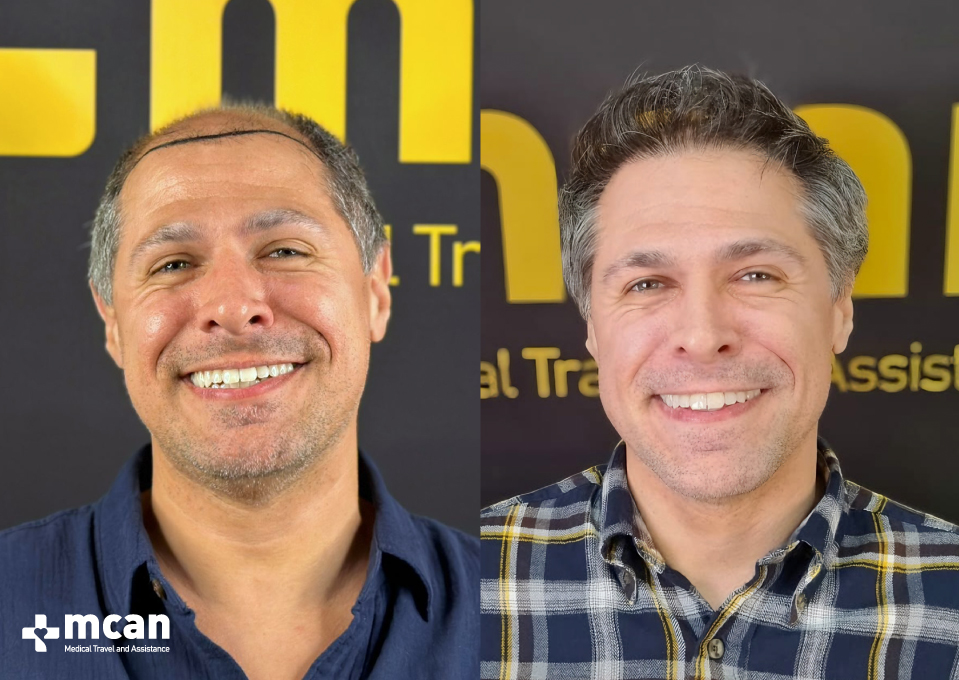
The number of grafts used directly impacts the final appearance and density of your hair transplant. The table below outlines typical outcomes for different graft ranges, highlighting both the visual impact and overall aesthetic improvement:
| Graft Range | Visual Impact | Aesthetic Improvement |
|---|---|---|
| 500 to 1500 Grafts | Subtle enhancements, perfect for addressing minor thinning or slightly receding hairlines. | Natural-looking touch-ups with moderate density |
| 2000 to 3000 Grafts | Noticeable improvement in density, creating a fuller hairline and thicker hair in the mid-scalp area. | Balanced coverage with a natural blend into existing hair |
| 3500 to 5000 Grafts | Dramatic transformation, covering larger areas of hair loss from the front to the crown. | Significant increase in volume and density for a fuller, youthful look |
| 6000 Grafts | Complete restoration of hair across the entire scalp, providing maximum coverage and fullness. | Comprehensive, high-density results that replicate natural hair growth |
FAQ About Hair Transplant Grafts
What is the maximum number of grafts that can be transplanted in one session?
Most surgeons can safely transplant up to 5000 grafts in a single session, depending on the donor area’s capacity and the patient’s overall health. Larger graft counts are typically divided into multiple sessions to avoid overharvesting.
How many grafts do I need for a natural-looking hairline?
Restoring the hairline usually requires 500 to 1500 grafts, depending on the level of recession and the desired density. Single-hair grafts are often used along the hairline to create a soft, natural appearance.
Can I split a large graft count into multiple sessions?
Yes, large graft counts—especially those above 4000—are often divided into two or more sessions. This approach prevents overharvesting the donor area and allows for better healing between sessions.
How do I calculate the number of grafts needed for my crown area?
The crown typically requires more grafts than other areas due to its circular shape and the need for consistent density. Mild crown thinning may need 1500 to 2000 grafts, while severe baldness can require 3000 to 4000 grafts.
Will more grafts guarantee better hair density?
More grafts can increase density, but only to a certain extent. Placing too many grafts too closely can damage follicles and affect growth. An experienced surgeon will balance density and follicle survival for optimal results.
How many hairs does 1 graft typically contain?
Each graft contains 1 to 4 hairs, with an average of 2.2 hairs per graft. Single-hair grafts are used for the hairline, while multi-hair grafts add density further back.
What happens if I need additional grafts in the future?
If hair loss progresses or the initial transplant doesn’t provide the desired density, additional grafts can be transplanted in follow-up sessions, provided the donor area has sufficient follicles.
Does the graft count affect the cost of the hair transplant?
Yes, the cost is usually calculated per graft. Higher graft counts increase the overall cost, but clinics like MCAN Health offer package deals that make larger procedures more affordable.
How do surgeons ensure that grafts are placed evenly?
Skilled surgeons carefully place each graft at the correct angle and direction to match the natural hair growth pattern. This technique ensures even coverage and a natural appearance.
Is there a limit to how many grafts can be extracted from the donor area?
The donor area typically allows for 5000 to 7000 grafts to be harvested without noticeable thinning. Overharvesting can cause patchiness, so surgeons carefully manage the extraction process to maintain a natural look.
Hair Transplant in Turkey: Unlimited Grafts with MCAN Health
Choosing the right clinic for your hair transplant in Turkey is essential to achieving natural, long-lasting results. At MCAN Health, we combine medical expertise with personalized care, ensuring that every patient receives the best possible outcome. Unlike clinics that charge per graft, we offer all-inclusive packages priced per session, allowing patients to receive the number of grafts they need without worrying about additional costs. This approach is particularly beneficial for individuals requiring a higher number of grafts to restore extensive hair loss.
Our internationally accredited clinic is renowned for using advanced techniques such as FUE, Sapphire FUE, and DHI, which allow for precise graft placement and natural hair density. With over 15,000 happy patients and a 4.8 overall rating, our team of experienced surgeons and multilingual staff are dedicated to providing exceptional results.
From the moment you arrive in Istanbul, we take care of every detail, including airport transfers, luxury accommodation, and daily nurse visits during your recovery. Our best price guarantee ensures that you receive premium care at an affordable price. Whether you need 2000 or 5000 grafts, our per-session pricing means you get the most value for your investment.
Ready to transform your appearance? Book your free consultation today and discover why MCAN Health is the trusted choice for hair transplants in Turkey.
 What Exactly is a Deep Plane Facelift Method? Do You Need It?
What Exactly is a Deep Plane Facelift Method? Do You Need It?  At-Home Teeth Whitening: An Easy Way to Get Your Teeth Brighter
At-Home Teeth Whitening: An Easy Way to Get Your Teeth Brighter  MCAN Health Announces Opening of New Office in London
MCAN Health Announces Opening of New Office in London